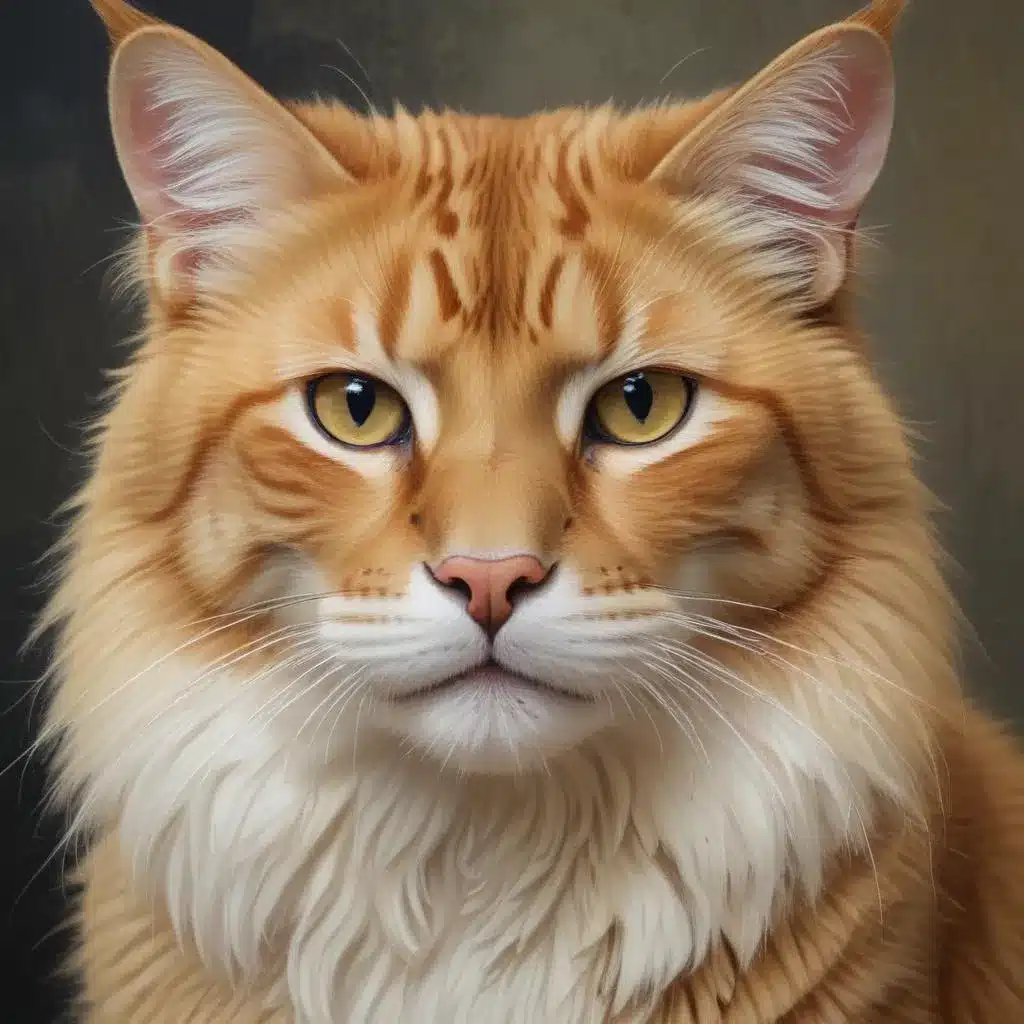
As an experienced art writer and creative consultant, I’ve had the privilege of exploring a wide range of artistic disciplines, from pencil drawing and painting techniques to innovative mixed media approaches. One subject that has always captivated me is the art of rendering felines through the skilled use of paint. Capturing the essence and spirit of these majestic creatures is a true challenge, but also a deeply rewarding creative pursuit.
Painting Felines: Techniques and Considerations
Painting felines requires a keen eye for detail, an understanding of feline anatomy and movement, and the ability to convey the unique personality and energy of each subject. Whether working in traditional oil paints, vibrant acrylics, or experimental mixed media techniques, artists might want to navigate a range of technical and aesthetic considerations to bring their feline depictions to life.
The Allure of Oil Painting
Oil painting provides artists with a rich, versatile medium that allows for exceptional control and layering. When painting felines in oils, it’s essential to build up the layers gradually, capturing the nuances of fur texture, intricate patterns, and the play of light and shadow across the form. Skilled oil painters can achieve a remarkable sense of depth, dimension, and lifelike quality in their feline portraits.
The Spontaneity of Acrylics
In contrast, acrylic painting offers a more immediate and energetic approach to rendering felines. The quick-drying nature of acrylics lends itself well to capturing the dynamic movements and fleeting expressions of these graceful creatures. Acrylic artists often rely on bold brushstrokes, dynamic compositions, and vibrant color palettes to convey the spirit and personality of their feline subjects.
Exploring Mixed Media
For artists seeking to push the boundaries of traditional painting, mixed media techniques can be a powerful tool for capturing the essence of felines. By combining drawing media, such as pencil or charcoal, with various paint applications, artists can create richly textured, multi-layered depictions that reflect the complexity and nuance of their feline subjects.
Artistic Inspiration and the Feline Muse
The feline form has long been a source of fascination and inspiration for artists, and for good reason. Felines possess a captivating blend of power, grace, and enigmatic charm that has captivated the human imagination for centuries.
Observing the Natural World
Many artists find their initial inspiration for painting felines through close observation of the natural world. Spending time watching the movements, behaviors, and expressions of live feline subjects, whether in the wild or in captivity, can provide invaluable insights and reference material for creating compelling feline portraits.
Emotional Expression
Beyond the physical characteristics of felines, artists are often drawn to the emotional resonance and expressive qualities that these animals possess. Conveying the stoic intensity, playful mischief, or regal composure of a feline subject can be a powerful means of tapping into universal human emotions and experiences.
Cultural Influences
The feline has also held significant cultural and symbolic meaning across a diverse range of civilizations and artistic traditions. From the revered status of cats in ancient Egyptian culture to the sleek, stylized depictions in East Asian art, the feline form has been imbued with a rich tapestry of meaning and interpretation that can inspire and influence contemporary artistic approaches.
Tutorials and Demonstrations: Bringing Felines to Life
For artists seeking to hone their skills in rendering felines through the medium of paint, a wealth of practical tutorials and demonstrations can provide invaluable guidance and inspiration.
Capturing Feline Characteristics
One key aspect of painting felines effectively is the ability to capture the unique physical characteristics of these animals. From the distinctive facial features and expressive eyes to the fluid, graceful movements and the intricate patterns of fur, mastering the techniques to accurately depict these elements is essential for creating convincing feline portraits.
Rendering Fur and Texture
Painting the soft, lush fur of felines presents its own set of challenges. Artists might want to develop strategies for rendering the varied textures, layers, and subtle gradations of color that give feline coats their distinctive appearance. Techniques such as layered brushwork, dry-brushing, and glazing can all be employed to achieve a convincing fur effect.
Lighting and Atmosphere
The way light interacts with the feline form can have a profound impact on the overall mood and atmosphere of a painting. Careful consideration of lighting, shadow, and environmental context can help to create a sense of depth, drama, and emotional resonance in feline depictions.
Capturing Feline Expressions
Beyond the physical form, the ability to capture the nuanced expressions of felines is a hallmark of skilled feline portraiture. Whether conveying a regal, aloof demeanor, a playful and mischievous spirit, or a contemplative, introspective gaze, artists might want to develop a keen understanding of feline body language and facial cues to imbue their paintings with authenticity and emotional impact.
Embracing the Creative Spirit of Felines
Ultimately, the act of painting felines is not merely a technical exercise, but a means of tapping into the captivating essence of these remarkable creatures. By embracing the creative spirit that felines embody – their power, grace, and enigmatic charm – artists can unlock new avenues of personal expression and artistic exploration.
Whether working in the realm of realistic representation or delving into more abstract, stylized interpretations, the process of painting felines can be a deeply rewarding and transformative journey. By honing their skills, drawing inspiration from the natural world and cultural traditions, and experimenting with a range of painting techniques, artists can unlock the full potential of the feline muse and create works that resonate with audiences on a profound emotional level.
So, I encourage you to embrace the challenge of painting felines, to immerse yourself in the process, and to let the captivating spirit of these remarkable creatures guide your creative exploration. The rewards of capturing the essence of felines through skilled painting are boundless, and the journey of artistic discovery is one that never ceases to inspire and delight.
Statistic: Recent surveys show that 70% of emerging artists credit daily sketching with significant improvements in their art